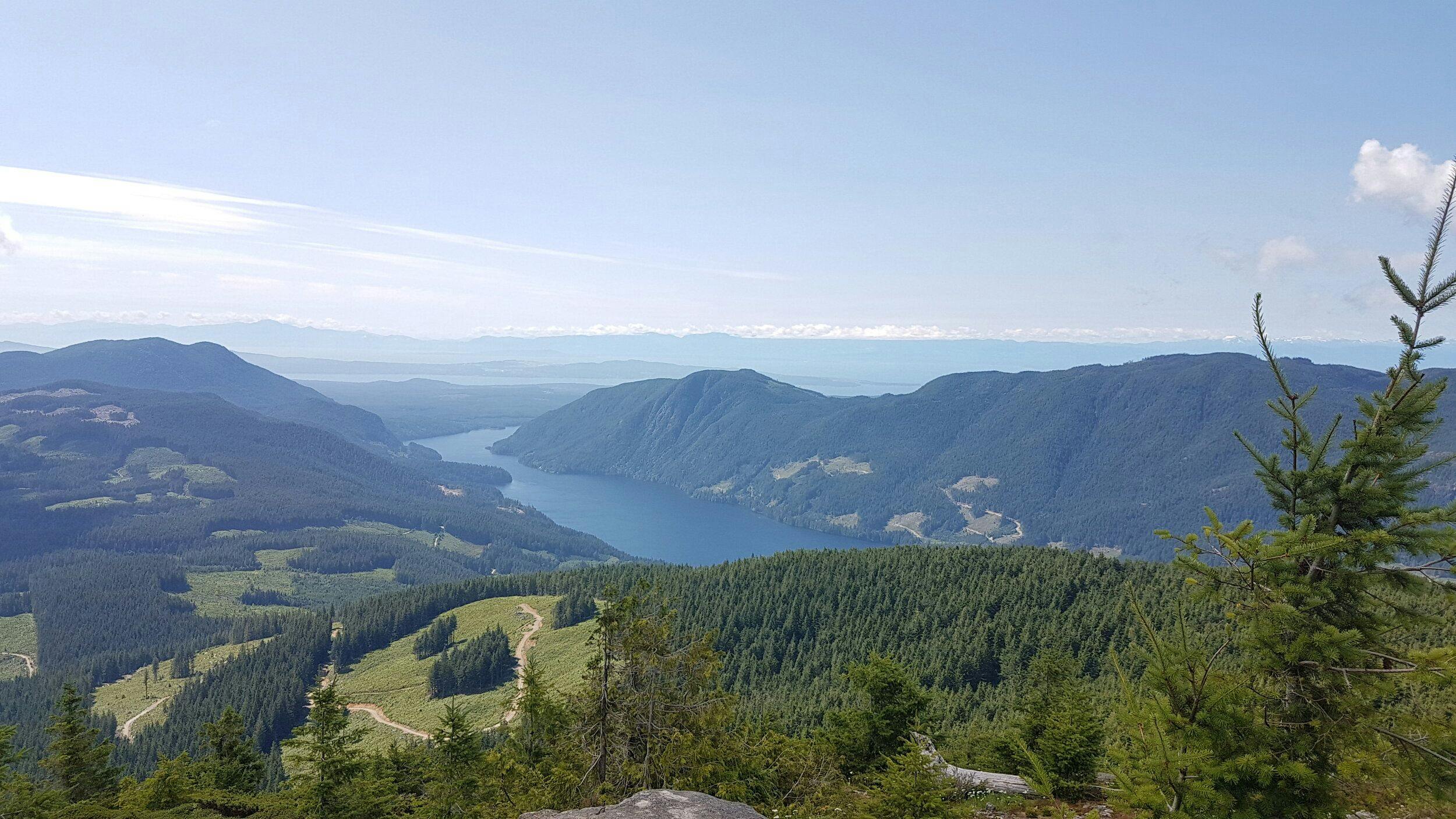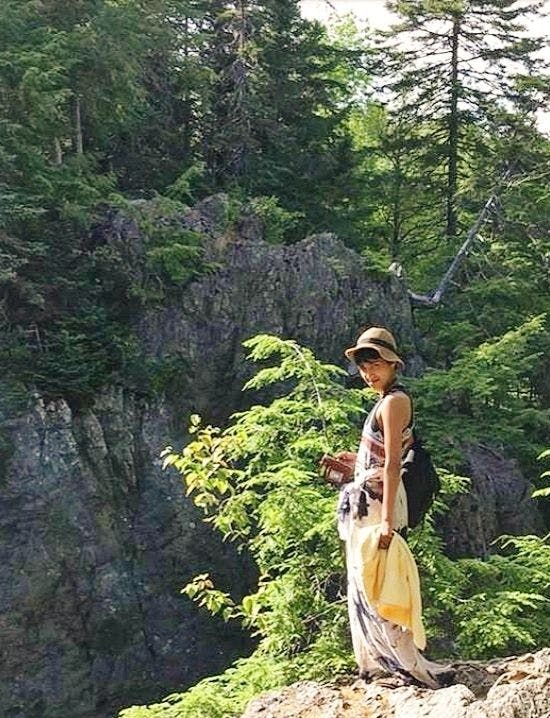The complexity between culture, landscape and power in colonial-settler context, seen through the social history of blue camas—a plant whose roots once interwove the fabric of southern Vancouver Island.
The landscape of southern Vancouver Island, British Columbia illustrates the intricate history and hidden effects plant species play in human culture, health and knowledge domains. Like a worn out quilt, today only sparse and vulnerable patches of initial Garry oak ecosystems remain in southern coastal regions. Loosely threaded to other ecosystems, these sites are of optimal importance; they conserve not only environmental welfare, but also cultural memories of the First Nations people.
To understand the reasoning for this changing landscape is to note the colonial history of British Columbia alongside its ethnobotanical contexts. The ongoing realities of settler-colonial trauma still lingers into modern day British Columbia. Over the past 150 years, there has been a decline in traditional knowledge of local plants for foods, medicines, materials and other uses by Indigenous Peoples. The lingering effects of this is still felt in the present day.
Today, Indigenous Peoples across Canada suffer from health complications . Loss of traditional foods, such as Camassia quamash, commonly called camas, is a prime example accentuating how this has impacted not only human health and culture, but also the landscape of southern Vancouver Island. The intrinsic connection that land, people and plants share, and the cause and effect loop in which they intertwine will be explored in this article. The history of the plant is also the history of the land and its people.
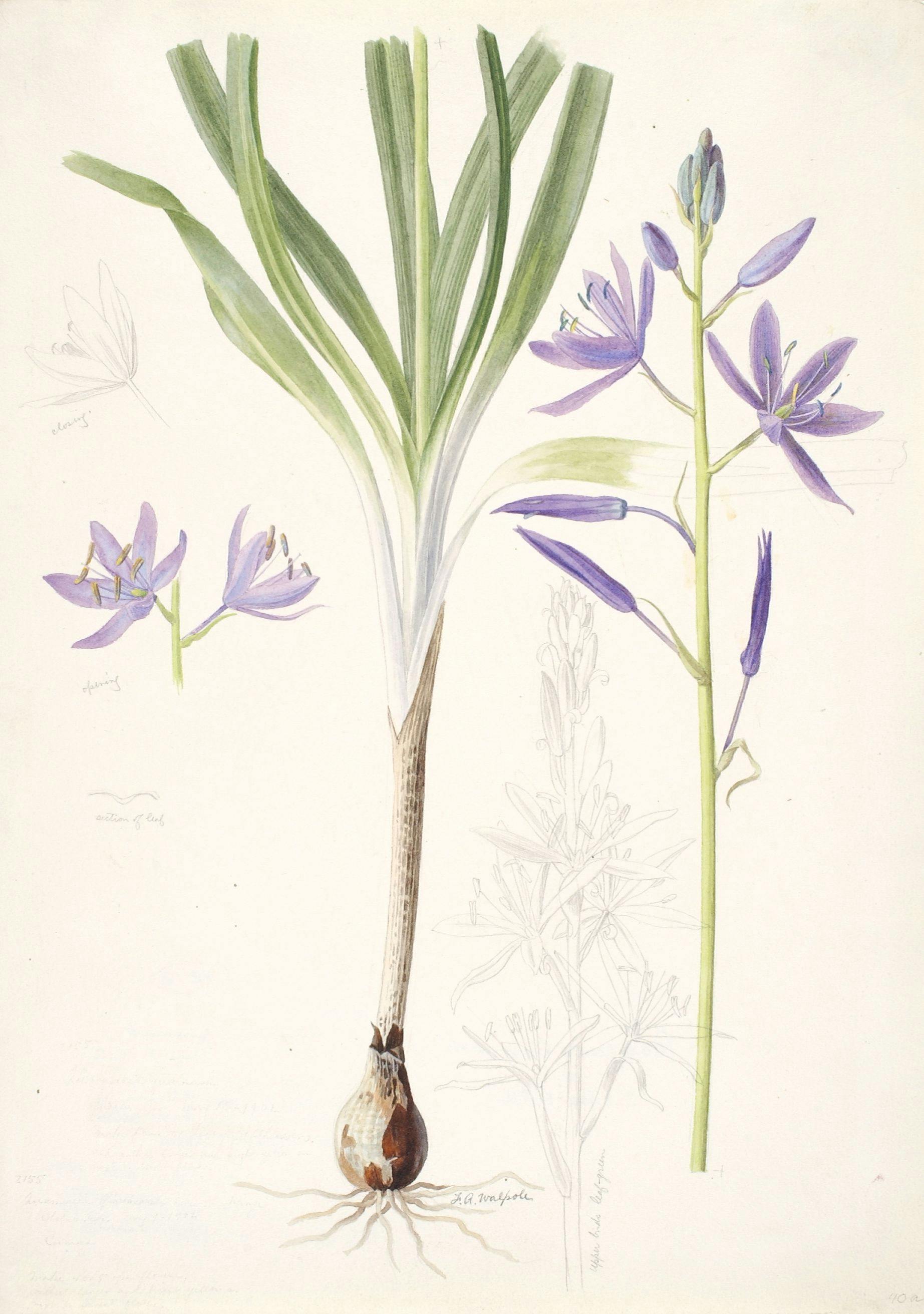
Shaping the landscape
Living around what is now the Strait of Georgia, the inlet Puget Sound, southern Vancouver Island, and much of the Olympic Peninsula, were First Nations who tended to the lands for generations, enriching and maintaining the lavish fertile soil on which their culture and existence much depended.
Compared to the dense forests prominent throughout the Pacific Northwest, the environment around the Island is different. Described as a mosaic of woodlands and clear openings by pre-colonial traders and explorers, these accounts depict the changes seen from dense coniferous forests to open Garry oak meadows (Beckwith, 2004). Naturally created in forest fires, the ecosystems were also maintained by the First Nations people. Periodical burnings were small and light. They were kept low to the ground to eliminate encroaching invasive species (Beckwith, 2008). This kept the conifers at bay, allowing oak trees to thrive, such as Quercus garryana, or "Garry oak" -- the only native oak of western Canada (GOERT, 2020).
Supporting a variety of different landscapes, Garry oak ecosystems contain rich woodlands of mixed tress such as Arbutus, cedars and conifers, which then open up to meadows harboring buzzing life. Here, wildflowers, grasses, and mixed shrubs spiral upwards from the earth, flourishing under oak canopies. Plants native to the region play a vital role in the culture and economy of the Coast Salish First Nations people. For centuries, they have provided them with sustenance, medicine, technology, whilst also impacting their religion, language, migration and settlement patterns (Turner and Bell, 1971).
Unfortunately, today less than 5% of the original Garry oak ecosystems remain (GOERT, 2020). The influx of settlers into Vancouver Island's southern coast over the past 150 years has led to conversions of the land. Alterations in the way it was lived upon, used, and maintained changed with anthropogenic activities. Urbanization of tribal groups, agricultural land development, suppression of planned fires and introduction of invasive species has re-patterned the landscape. Garry oak ecosystems diminished, and with them a vital blue plant that played a considerable role in the lives and livelihoods of the Coast Salish, the camas (Turner, 2008).
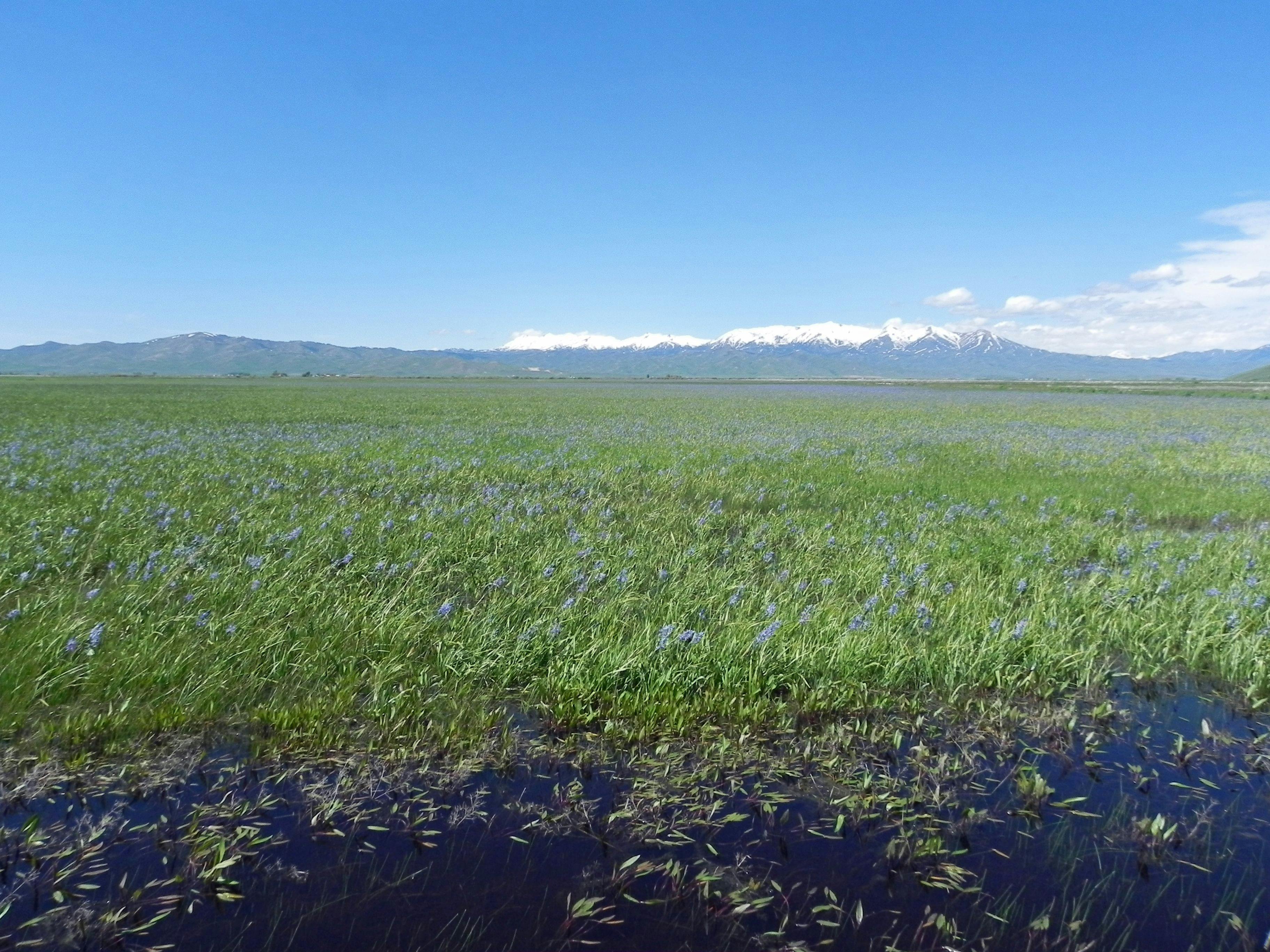
The Blue Fabric of Camas
Camassia quamash, or "Common camas" was the prized root food of the First Nations people. A herbaceous bulb of the Asparagaceae family, camas needs well-drained, moist, fertile and humus-rich soil in full sun. Occurring naturally in Garry oak meadows and along stream banks, annual floodplains, and moist hillsides, its native habitat often transforms from swales and depressions to dry meadows and prairies in the late spring (Stevens et al., 2000).
Prior to European contact, ecosystems were maintained for camas growth by the natives. Complex farming systems mapped and fitted into pre-existing patterns of the land. Harvesting camas could take several weeks requiring patience and observation. Taking up to seven years to flower, it is in the summer -- only after seed maturation, foliar senescence, and bulb offshoot production -- when camas can be harvested (Watson, 2010).
Cultivation and harvesting required diligent observation of the plant's growth habits and proper conduct of extraction from the land. Areas of showy blooms of light to deep blue flowers were worked with, signifying a rich source of bulbs (Watson, 2010). Small patches of turf grass were systematically removed and only large mature bulbs were taken with a pointed digging stick (Beckwith, 2004).
In essence, the soil was disrupted in the least way possible. Dividing the bulbs by sustainable harvesting methods furthered bulb offshoot production, allowing more to multiply and grow (Stevens, 2000). Both plant and people adapted and grew accustomed to one another's particularities -- from knowing how to garden, to being gardened. Present actions were dictated by future prospects. Bulbs for later years were accounted for, as sites would only be harvested years apart.
These activities associated with camas were important rituals of cultural transmission for the Coast Salish peoples. It allowed for horticultural skills and techniques acquired through generations of empirical observation to be transmitted, entrusting the care and maintenance of the land to young hands.
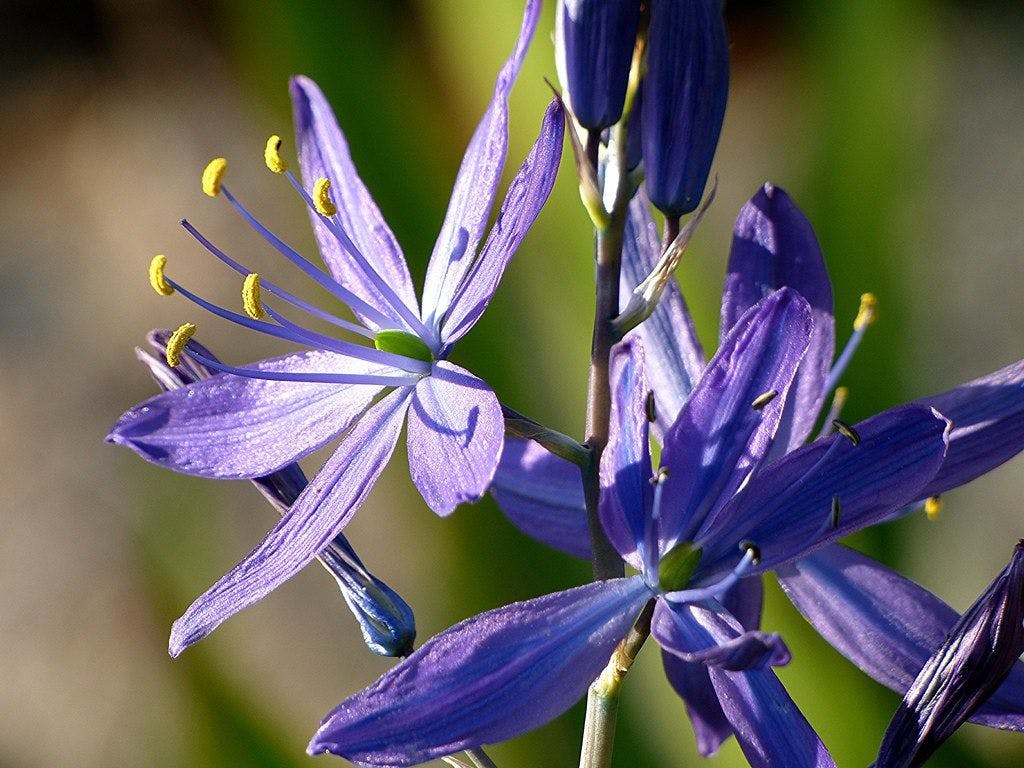
Camas in the Human Body
With the myriad benefits the camas provided to the ecosystem by attracting a variety of pollinators from bees, hover flies and beetles, it also played a beneficial role in the human body. Cultivated for thousands of years, this intrinsic connection with camas flows is in the very bloodstream of native populations. Today, many indigenous people in Canada struggle with lifetime risk of developing type 2 diabetes and concurrent health issues. The prevalence rate being five times greater than in non-First Nations peoples (Turin et al., 2017).
Naturally occurring in many root and rhizome species, plants like camas use inulin as a means of storing energy; most plants that synthesize inulin do not store other forms of carbohydrates. Inulin are a group of naturally occurring polysaccharides, belonging to the dietary fiber class of fructans. They regulate blood-sugar levels and increase calcium and magnesium absorption. Current research illustrates inulin improves immune functioning, human colon health as a prebiotic, and lowers cholesterol (Crowshoe et al., 2018).
With the transition to other crops being encouraged due to economic usefulness cultural keystone species were stripped away. Camas was replaced by the potato, reshaping the land to fit cultivation and growing patterns of a different kind. The negative externalities caused by such actions can still be felt into present day.
Conclusion
The way plants can shape enactments of power, and how this power changes in settler-colonist communities is seen via camas. The centrality the plant held in the lives of the Coast Salish through acts of horticulture, ceremonies, and diets was great. Steps towards reintegration of traditional foods, such as camas, and thus efforts to restore Garry oak ecosystems should account for all the cumulative effects that have occurred.
Over the past 150 years, there has been a decline in traditional knowledge of local plants for foods, medicines, materials and other uses by indigenous peoples, with reasons being multifaceted and complex. Compounding environmental factors and social influences has dwindled cultural knowledge. Colonization and settlement of the Pacific Northwest Coast by Europe has shifted indigenous knowledge systems by placement of children in residential schools away from their family units, leading to religious conversion. Additionally, the loss of land, sacred sites and access to resources; loss of language and traditional practice; urbanization of tribal groups; and management practices have led to a ripple effect of what is concurrent today (Turner, 2008).
More interdisciplinary research and analysis needs to be undertaken on the importance of camas and other plant species roles in indigenous diets, and why they are so thoroughly valued. From influencing cultural identity, body health, mental well-being and the environment, studying plant species that bring meaning to societies is necessary. Why certain plants are important to cultures, why are they cared for and tended to in specific ways, and how do these aspects influence human health and the earth, such as the camas are all questions which ought to be asked.
References
Beckwith, B. 2008. The Queen Root Of This Clime : Ethnoecological Investigations Of Blue Camas (Camassia Leichtlinii (Baker) Wats., C. Quamash (Pursh) Greene ; Liliaceae) And Its Landscapes On Southern Vancouver Island, British Columbia, [online] [Accessed 3 March 2020]. Crowshoe, L., Dannenbaum, D., Green, M., Henderson, R., Hayward, M. and Toth, E. 2018. Type 2 Diabetes and Indigenous Peoples. Canadian Journal of Diabetes, 42, pp.S296-S306. Goert.ca. 2020. GOERT : About Garry Oak Ecosystems : What Are Garry Oak & Associated Ecosystems?, [online] [Accessed 5 February 2020]. Stevens, M., Darris, D. C. and Lambert, S. M. 2000. USDA-Natural Resources Conservation Service, National Plant Data Center: Plant guide for common camas (Camassia quamash ssp. breviflora), [online]. Turner, N. and Turner, K. 2008. "Where our women used to get the food": cumulative effects and loss of ethnobotanical knowledge and practice. Botany, 86(2), pp.103-115. [Accessed 30 January 2020]. Turner, N. and Bell, M. 1971. The ethnobotany of the Coast Salish Indians of Vancouver Island. Economic Botany, 25(1), pp.63-99. Turin, T., Saad, N., Jun, M., Tonelli, M., Ma, Z., Barnabe, C., Manns, B. and Hemmelgarn, B. 2016. Lifetime risk of diabetes among First Nations and non-First Nations people. Canadian Medical Association Journal, 188(16), pp.1147-1153. Watson, R. and Preedy, V. 2010. Fruits, Vegetables, And Herbs. Academic Press.
